The Real Cost of 1 Week of Baby-Led Weaning (...with receipts)
- How to streamline your baby food prep so you’re not making special food just for the baby
- Why making real food for your baby is actually cheaper than relying on pouches or jarred purees
- How much is really costs to make your baby 5 new foods in one week (...that they’ll actually eat!)
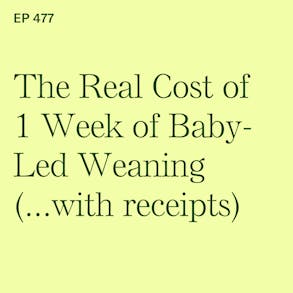
LISTEN TO THIS EPISODE
Episode Description
Does it cost more to do baby-led weaning or conventional adult-led spoon-feeding? In this episode I’ll break down the cost of one week of trying 5 new foods for your baby…with receipts so you can make the call whether or not this approach is worth your time (and money).

Other Episodes Related to this Topic
- Episode 111 - Grocery Shopping for BLW: Stocking Up Smart & What to Skip
- Episode 319 - Costco: 10 BLW Foods to Buy from Costco
- Episode 317 - Trader Joe's: 10 BLW Foods to Buy from Trader Joe's
- Episode 321 - Sprouts Farmer's Market: 10 BLW Foods to Buy from Sprouts
- Episode 323 - Walmart: 10 BLW Foods to Buy from Walmart
- Episode 325 - Whole Foods: 10 BLW Foods to Buy from Whole Foods
- Episode 369 - Target: 10 BLW Foods to Buy from Target
- Episode 371 - Thrive Market: 10 BLW Foods to Buy from Thrive Market
- Episode 373 - Aldi: 10 BLW Foods to Buy from Aldi
Links from Episode
- Baby-Led Weaning with Katie Ferraro program with the 100 First Foods™ Daily Meal Plan, join here: https://babyledweaning.co/program
- Baby-Led Weaning for Beginners free online workshop with 100 First Foods™ list to all attendees, register here: https://babyledweaning.co/baby-led-weaning-for-beginners

Latest Episodes
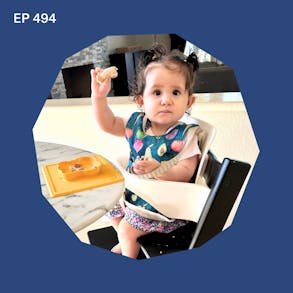

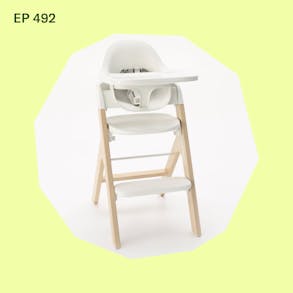
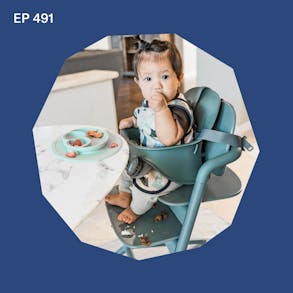
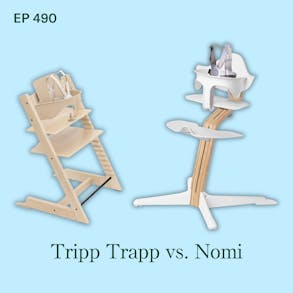
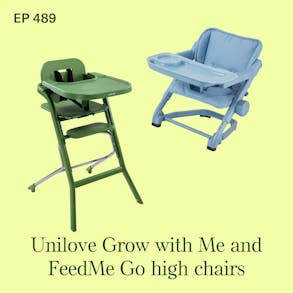
0 (0s):
Okay, I wish this were not true, but as someone who works in front of a computer or a phone all day, I know that of the average 20,000 breaths that Americans take a day, 90% of those and 90% of our time is being spent indoors. And the indoor air that we breathe can be up to a hundred times more polluted than outdoor air according to the EPA. And indoor air pollutants can lead to respiratory symptoms like sneezing, congestion, scratchy throat, or even more serious health problems like lung and heart disease. So what can we do about it? Well, air doctor has thought a lot about this and they've put their technology to work for you. The Air doctor is an air purifier that filters out 99.99% of dangerous contaminants so that your lungs don't have to.
0 (47s):
So this includes allergens, pollen, pet dander, which is a huge problem in my house, as well as dust mites, mold spores, and even bacteria and viruses. Air Doctor comes with a 30 day money backed guarantee. So if you don't love this product, you can just send it back for a refund minus shipping. If you head to air doctor pro.com and you use the promo code weaning, you can get up to $300 off air purifiers. And this is exclusive to podcast listeners, but you will also receive a free three year warranty on any unit, which is an additional $84 value. You can lock up this special offer by going to A-I-R-D-O-C-T-O-R-P-R o.com.
0 (1m 30s):
That's air dr pro.com. And use the code weaning, W-E-A-N-I-N-G, To get started today.
1 (1m 38s):
This episode is brought to you by United Airlines. When you wanna make the most of your vacation book with United, they're an airline that cares about your travels as much as you do. United is transforming the flying experience with Bluetooth connectivity screens power at every seat and bigger overhead bins to help fit everyone's bag. And with their app, you can skip the bag, check line, get live updates and more change the way you fly. Book your next trip today@united.com.
0 (2m 8s):
If you take the cost of those five foods, those five new finger foods that you're making for your baby in this next week of starting solid foods with Baby Led Weaning. And if you compare that to the alternative, which we've determined is buying between two and three pouches per day, it's actually going to cost you nine more dollars per week to go the pouches route than it would to just buy the actual foods that you're gonna have to make for your baby. And I get it, yes, your time is valuable too. So there is a little bit of work on your part involved here. You have to actually make the food for your baby, but it's easy. You can do this quickly, you can batch this so You don't have to be cooking every single day or cooking from scratch, and you've got to make food for this small person for the next 17 and a half years of its life. So you might as well do the work now when that all important flavor window is open, and your baby will like and accept the wide variety of foods that you're offering them as opposed to going the pouches route, which we know not only is nutritionally incomplete, but your baby's not getting those sensory experiences.
0 (3m 3s):
They're not getting the allergenic foods, they're not getting the textures. And by the way, it costs more. Hey there, I'm Katie Ferraro, registered dietician, college nutrition professor and mom of seven specializing in baby Led Weaning here on the baby Led Weaning with Katie Ferraro podcast. I help you strip out all of the noise and nonsense about feeding, giving you the confidence and knowledge you need to give your baby a safe start to Solid Foods using baby Led Weaning Does. it cost more to do baby led weaning or conventional adult led spoon feeding In. this episode I wanna take you through one full week of trying five new foods for your baby with baby Led Weaning, and show you how much that is going to cost and compare that to what it would cost if you were just to go and buy some pouches to try to use those to introduce your baby to a couple of new foods.
0 (3m 59s):
Now, I like to start each of these mini training episodes with a baby Led Weaning tip of the day. And today's tip is you do not have to make every food from scratch. I hear parents who are like, I want my baby to learn how to eat real food, but I'm not a great cook, or I don't have a ton of time to cook. And I want you to know that there are so many wonderful, affordable, prepared, and some even slightly processed foods that are totally fine and safe and delicious for your baby to eat. So nobody's saying you have to be a gourmet cook to help your baby learn how to eat. Sometimes I'll hear parents say things like, oh, I never want my baby to eat any frozen foods or canned foods. And I'm like, why not? There are some great options in the frozen foods aisle.
0 (4m 41s):
There's some wonderful no salt, no sugar added canned foods that are so convenient as well. So I don't want you to come into this next phase of your baby's life thinking that, oh my gosh, it's gonna cost me so much to teach my child how to learn how to eat real food. I oftentimes tell parents, I know this is a lot of work, and I know that helping your baby make that transition to Solid Foods can be a stressful time, but you are going to have to feed this small person real food for the next 17 and a half years of its life. So you might as well do the work now, when that all important flavor window is open for your baby. And that flavor window is that brief period of time where babies will like and accept a wide variety of foods and flavors and tastes and textures.
0 (5m 23s):
But as we all know, babies don't wake up on their first birthday and magically know how to eat a hundred different foods safely, right? We use this weaning period. We take advantage of the flavor window to introduce them to lots of foods and flavors and tastes and textures, but the baby can't try those foods if you don't make those foods. And you can't make those foods if You don't have those foods. And the way you get those foods is by having a plan and then getting those foods in your house and prepping them so that they're safe, prepared properly, and ready for your baby to try a couple times each week. Now in My program, BABY Led Weaning with Katie Ferraro, we introduce five new foods each week. We follow my five step feeding framework.
0 (6m 3s):
So every Monday we introduce a new fruit. Every Tuesday we introduce a new vegetable. Every Wednesday we introduce a new starchy food. Every Thursday your baby tries a new protein food. And then on Friday you try a new allergenic food. You do that new allergenic food twice on Friday, twice on Saturday, twice on Sunday. So across that weekend, no other new foods because we're waiting and observing to see if your baby has any allergic reaction to that new potentially allergenic food. But you can feel free to introduce the familiar foods from the other four days along with that allergenic food across the weekend. So each of those new foods, one from each of the five categories, you pull those from my hundred First Foods list. So I created the hundred First Foods approach to starting solids with baby led weaning back in 2016.
0 (6m 45s):
If you don't already have a copy of my hundred First Foods list, you can get that on the free online workshop that I teach called Baby Led Weaning FOR BEGINNERS. I give everybody on that workshop a free copy of that original a hundred FIRST FOODS list with lots of tips on how to safely prepare the foods. You can sign up for that free online workshop, baby Led Weaning FOR BEGINNERS by going to baby led weaning dot co slash workshop. You can take it right now, later today, tomorrow when your baby naps, whenever is convenient for you. But get that list of a hundred foods so that you'll never run out of ideas of new foods that your baby can't eat. So for this particular episode, what I wanted to do was share The Real Cost of baby Led Weaning with receipts. And so this was an activity that I did in real life with a baby that I'm working with, a family that I'm doing some coaching.
0 (7m 29s):
They're going through my hundred First, Foods Daily, Meal Plan. So this is a 20 week program. It's part of my baby Led Weaning with Katie Ferraro program. Every week, the baby eats five new foods. This particular baby happens to be in week 15 of starting solid foods and the five new foods that the baby is trying, they're from the hundred First, Foods, Daily, Meal Plan. So in week 15, the new fruit that we try is strawberry. The new vegetable that we try is Brussels sprouts. The new starchy food that we try is tortilla. The new protein food is black beans, and the new potentially allergenic food is wheat germ. So I wanna share in a moment what it costs to actually purchase those foods because my intern went to the store, which in my town, the grocery store that has the greatest selection of foods at an affordable price is Walmart.
0 (8m 15s):
So I always have my interns go to Walmart and buy all of the ingredients for the recipes in the hundred First, Foods, Daily, Meal Plan. So I live in Southern California, and I'm recording this in October of 2024. We're going through a inflationary period where groceries are very expensive, so we're working extra hard to simplify our recipes and streamline them so that families aren't buying anything unnecessary that they don't need. Now, there's two routes that families go inside of our program. You can either pick the five foods each week that you want your baby to try. You dip into our hundred First Foods content library. You watch the videos and get the recipes and see the instructions on how to make each of those foods safe for your baby at their current age and stage. So we have some families that like to pick their own five foods each week, and we have other families that are like, Katie, can you just do it for me?
0 (8m 60s):
And they're following my hundred First Foods Daily Meal Plan approach. So this particular family and the baby that we're cooking for is following the meal plan. So the foods already picked strawberry, Brussels sprouts, tortilla black beans and wheat germ. And before I mentioned the actual like logistics of the grocery store shopping, et cetera, I do wanna share that I've done podcast episodes on each of the major grocery stores in the United States and some of my favorite baby Led Weaning foods to get from there. I chose five to 10 different foods from each of those stores, from different parts of my hundred First Foods list. So I did grocery stores like Trader Joe's and Aldi. We did Costco Target, we did Walmart. And I'll link all of those specific episodes. If you're like, oh, there's a store that I always shop at, I want you to listen to that episode so that you can get the ideas of the foods that I think are particularly useful, helpful, and affordable from that particular store.
0 (9m 47s):
Hey, we're gonna take a quick break, but I'll be right back. As a new parent, are you surprised by how quickly the pictures of your child have come to dominate the photo space on your phone? And While, you certainly want to share them with certain members of your inner circle. Keeping your kids' photos private is also important. So that's where the Family Album app comes in. This free app was created to give parents a secure and easy way to share photos and videos with loved ones. The Family Album app creates an instantaneous digital time capsule of your family's journey where all of the memories are chronologically organized, and the app automatically sorts photos and videos by month and year while displaying each child's age, which makes it so easy to see your child's growth over time.
0 (10m 35s):
In this digital age, your child's privacy is gold, and the Family album app is Fort Knox. It's an exclusive space accessible only to those you invite. So there's no unwanted eyes, just a secure personal haven for your family's memories. If you are looking to level up your photo sharing and organization game with a secure one stop, easy to use photo organization app, head over to the app store, search Family album. That's one word, family album, and download the Family album app for free and start creating a legacy of love one photo at a time.
0 (11m 19s):
Back to the Walmart. In my town in Southern California, I had previously done a big project for a talk that I gave for the National WIC Association. So WIC is the program, the Women Infant and Children Program in the United States. Half of all babies born in this country are on the WIC program, meaning that they receive benefits their moms do to buy healthy foods that help the mom during pregnancy and breastfeeding. But then also when the child starts Solid Foods, they get a benefit as well. And so I help work on the modernization of the infant feeding curriculum for the different state WIC associations throughout the the country. And I've also done some work at the national level. And so one of the most requested talks that I do is about how to utilize extra pureed foods because the WIC program gives out jarred, pureed baby foods, okay?
0 (12m 5s):
But parents like, well, I wanna do baby Led Weaning, but I get all this pureed from wic. So what I help do is bridge the gap by showing them how to make safe finger food recipes using the pureed foods they're getting on the WIC program, and turning those into finger foods that the baby can use for baby Led Weaning. So we've done a lot of analysis of the different types of foods available at grocery stores throughout the United States in pureed form. And basically the summary of that, the long and the short, is that if you look at pureed fruit options that are available, vegetable options, starchy foods, proteins, and allergenic foods. So the foods from the five different food categories of my hundred First Foods list, we find that if you only buy baby food from the grocery stores in the foods that are allowed in the WIC program, you would only get five different types of fruits max, seven different types of vegetables, max, five different types of starches, max, only three different proteins, and none of the allergenic foods are available as part of that program.
0 (13m 2s):
And so if you add that all up, there are 20 possible foods that your baby could try if you only stuck to purees. And unfortunately, there's a lot of families who, if they, they don't know how to make those foods or incorporate them into other finger foods, their baby is gonna have max 20 different foods by the time they turn one. And we know that that's not going to include a variety of different proteins. It's not going to have any other textures besides purees. They're not going to get any of the potentially allergenic foods. So while pureed foods in small quantities and from time to time are perfectly fine, we know that they are not sufficient to help your baby get to the point where at the age of one, your baby could be getting most of their nutrition from food. And that's our goal with starting solid foods, is that you start out at six months of age when a hundred percent of your baby's nutrition is coming from infant milk, breast milk or formula, and you're moving your baby to the point by where when they turn 1-year-old, the majority of their nutrition can be coming from Solid Foods, but not if they're not learning how to eat real foods.
0 (13m 56s):
So we have a very big limitation in the sense that with our a hundred First Foods approach, our babies are trying a hundred different foods, including all of the allergenic foods, lots of different textures, lots of iron containing foods, both plant and animal protein foods, iron, zinc foods. They're getting a hundred different foods before they turn one. But if you stick to purees, the max number, even if you maxed out at the grocery store, would be 20 different foods that your baby would try. Now, in today's episode, I want to share the cost of the real foods, just to show you that I think sometimes parents think, oh, the puree route is just cheaper. Not only is it not cheaper, but it's also not nutritionally complete for all the reasons that I just shared. So if we skip ahead to the real foods, having my intern go to the Walmart, get the foods, okay, if you got the five foods that you would need, and this is in order to make two meals a day, so at six and seven months of age, we like to see your baby eating two times per day, one to two times, okay?
0 (14m 45s):
But we always make enough food in our program so that the baby has two solid meals per day at six and seven months of age at eight to nine months of age, we bump that up to three full meals a day, and then the portions get slightly larger from 10, 11, and 12 months of age as your baby nears. That one year mark, they're eating three meals a day with a little bit of infant milk in between those meals as their snack, and most of their nutrition at that point is coming from food. So from the grocery list, going to Walmart, strawberry, Brussels sprouts, tortilla black beans and wheat germ, the cost for all five of those foods to get enough to make two meals a day, but also a weekend maintenance menu. So we always provide menus for the weekend because we're reintroducing those allergenic foods multiple times in order for the baby to get multiple exposures.
0 (15m 28s):
So this is essentially seven days worth of food. The total was $14 and 28 cents. So that's if you just got the basic foods and you prepared them in finger food format. And of course, most of your baby's nutrition early on when starting solid foods, that's gonna be coming from breast milk or formula. And as your baby gets more proficient at eating, they start eating more food, they start drinking less infant milk. The particular baby that I'm working with in week 15, okay, this baby is very, very gung-ho about Solid Foods. Mom's already dropped a morning nursing session. She's noticing that the duration and the frequency of nursing sessions is starting to decline. Baby is starting to drink more breast milk out of an open cup. Baby's starting to eat more food at mealtime.
0 (16m 9s):
So for $14 and 28 cents, she can get that baby all the solid food that that baby needs to try the five new foods. And now they've been doing this also for 15 weeks at this point. So this is, these are our foods number, 71, 72, 73, 74, and 75 for the baby. So she's well beyond those 20 foods that she would get if she were just to stick to pure from your typical grocery store in the United States. Now, for families that are doing a little bit more of an elaborate approach, okay, they're like, listen, we're into the point where like our baby's eating modified versions of the same foods that the rest of our family is eating by week 15. This baby is eating combination foods and multi textured foods. And so for the families that are following our hundred First, Foods, Daily, Meal, Plan, we have a lot more involved recipes.
0 (16m 55s):
So I'll just kind of give you the rundown instead of just the typical, you know, finger foods that we do early on in phase one of baby Led Weaning for the strawberries, our babies are trying strawberry french toast, and all these recipes have no added sugar and no added salt. They're all part of the meal plan in the program for Brussels sprouts, the babies are eating shaved Brussels sprouts fritters for the tortilla. There's a very delicious chicken enchilada casserole that they're trying for the black beans, which is the protein. The recipe is a black bean sweet potato tots. And then for the wheat germ and wheat germ is the potentially allergenic food. There's a wheat germ banana bread recipe. And so if you were to buy all of the ingredients for all five of those recipes, which also make enough that other family members can't eat.
0 (17m 38s):
Now, whether it's all of your family or not, depends on how big your family is. But the ingredient list plus the five new foods, if you're following that meal plan with all of those recipes that worked out to $28 and 51 cents, so it's essentially double. So if you're gonna go just from the finger foods to okay, making recipes, but again, these are recipes that the whole family can eat throughout the week with lots of extras for the babies to get those reintroductions that worked out to $28. Now at the same store, if you were like, let's say we go back to the beginning and you're just starting solid foods and you're trying to get your baby as many foods, but you're not really sold on this idea of them eating real food, if you were to go the pouches route, so if you just did three pouches a day from Walmart and trying to hit as many of the different foods as you can, okay, they, they sell the most affordable way to get pouches.
0 (18m 25s):
There are nine packs. So if you got two nine packs of pouches, that would be 18 pouches, assuming that you're feeding your baby two to three pouches a day. So that would get you to six or seven days. The cost for those 18 pouches would be $23 and 6 cents. So if you're buying just the pouches, again, that's $23 and 6 cents. But if you're buying the five real foods for the week, that's $14 and 28 cents. And if you're buying all of the ingredients, assuming you literally have like, you know when you get into a rental house, like if you're on vacation, don't you hate it when you open the pantry and you're like, oh my God, there's not even like oil here or spray stick, like there's nothing. If you had to start from scratch, it would cost you $28 and 51 cents to make all of the recipes. So it would literally be five more dollars to make five real recipes that your whole family could eat, including your baby.
0 (19m 12s):
It would be five more dollars to do that than it would be just to buy pouches that you would offer your baby two to three times a day. And keeping in mind that pouches, they're not nutritionally complete, right? You are not getting the texture, you are not getting the protein, you are not getting the iron, you are not getting the allergenic food. So this is just like a little bit of a bandaid, okay? Also, not to mention that there are no developmental milestones that require your baby to learn how to suck out of a pouch. Pouches are developmentally inappropriate. They oftentimes have ingredients that are not appropriate for children, including a lot of pouches that actually have added sugar, which is just mind blowing to me. And you don't, your baby doesn't see the food in when it's in a pouch, right? They don't touch the food, they don't smell the food, they don't interact with the food. They don't learn how to chew the food, okay?
0 (19m 53s):
So pouches are not an appropriate replacement for learning how to eat real food if you're going on a trip and you need a sometimes food that you're gonna lean on to get you through that trip, yeah, pouches in moderation are perfectly fine. My suggestion to you is if you are using pouches on occasion that you put the pouch into a bowl, okay? So that your baby does not suck it out of that plastic container and that you put, you utilize the preloaded spoon approach whereby your baby is the one actually feeding themself that pureed food. But keeping in mind that your baby can learn to eat real food versions of all of the foods that are in a pouch, you do not need to liquefy them and bathe them in applesauce or pear puree in order to quote unquote, get your baby to learn how to eat vegetables.
0 (20m 35s):
Hey, we're gonna take a quick break, but I'll be right back. One thing that I really struggle with is drinking enough water. I know drinking water is important to staying hydrated and healthy, but I was surprised to learn that extensive research by the environmental working group found that three out of four homes in America have harmful contaminants in its water. So I wanna build healthier habits for myself, but I also wanna stay hydrated with pure healthy water, and that's why I recommend checking out AquaTru. AquaTru purifiers use a four stage reverse osmosis purification process, and it removes 15 times more contaminants than ordinary pitcher filters. So AquaTru has water purifiers to fit every type of home they've got installation free countertop purifiers to higher capacity under sink options that even have a wifi connected purifier plus mineral boost options.
0 (21m 25s):
The AquaTru filters are affordable and long lasting. There's no change in the filters every two to three months. AquaTru filters last from six months up to two years, and just one set of filters from their classic purifier, it makes the equivalent of 4,500 bottles of water. So it works out to less than 3 cents a bottle, not to mention the environmental impact that you have by not wasting tons of extra plastic. Best of all, I think B Aqua true water tastes fantastic, and you don't have to worry about any harmful contaminants in your water. We collectively drink a ton of water in our house. I can actually taste the difference compared with my old filter and don don't know if this is over the top, but we recently got a dog, and I give the AquaTru water to my dog now too.
0 (22m 5s):
AquaTru comes with a 30 day money back guarantee. It makes a great gift. Since you're a listener of this show, you can get 20% off any AquaTru purifier if you head to the website aquatru.com, that's A-Q-U-A-T-R u.com, and enter the code weaning at checkout. That's 20% off any AquaTru water purifier when you go to aquatru.com and use promo code weaning W-E-A-N-I-N-G at checkout. So just to run down the numbers, again, just the plain five foods for that week for Finger Foods, $14 and 28 cents.
0 (22m 47s):
If you were to bump it up and do the full blown five foods from my hundred First Foods, Daily, Meal Plan for this particular week with every single ingredient you need to make food that would not only feed your baby, but also the adults and possibly any other children in your household, that would be $28 and 51 cents if you were just to default to pouches buying your baby two to three pouches per day, even in the value packs. When you buy 'em in quantity, that works out to $23 for the week, and you're acknowledging that that's not a nutritionally complete approach for your baby. So all signs point to, yeah, it's more work to actually open the can of no salt black beans and work them into a black bean sweet potato burger, but your child is learning how to eat real food as opposed to shoving a pouch of sweet potato puree into their mouth where they're not truly experiencing that food, not trying a new texture, not getting all of the taste and the flavor and the sensory benefits of learning how to eat real food.
0 (23m 42s):
If you're interested in learning more about the limitations of pouches, I have an episode all about pouches. I did it with my colleague Don Winkleman, who's a speech language pathologist. She also is a specialist in Baby Led Weaning, and we discussed from both the developmental as well as a nutrition standpoint, the limitation of pouches not shaming you if you buy pouches on occasion. But I also don't want you to fall into the trap of thinking that pouches are an appropriate replacement for your child, learning how to eat real food. If you would like to learn more about how to make those real foods safe for your baby and start working your baby through five new foods a week so that they can eat 20 foods a month, and in five short months, your baby will have eaten a hundred different foods, your baby will be an independent eater who is getting most of their nutrition by age one.
0 (24m 25s):
Then I want to invite you to join my online program called Baby led weaning with Katie Ferraro. That's where the hundred First Foods Daily Meal Plan is. That's where my hundred FIRST FOODS content library is. That shows you all of the recipes and the visuals, the videos, the instructions on how to make these foods safe for your baby's age and stage, along with a done for you blueprint. So you don't even have to think about what foods your baby's gonna buy next week. I literally send you a grocery list every week, and I'm like, go to the store, buy these foods, and here's how you make the recipes that your baby is going to learn how to eat. 'cause I know this is a lot of work, and I basically went and created the program that I wish I had when I was starting solid foods with Baby Led Weaning for my babies. I hope you'll check it out. It's at baby led weaning dot co slash program. I'll put a link to some of the other episodes that I mentioned and the resources in the show notes for this episode, which you can find@blwpodcast.com slash 4 7 7.
0 (25m 13s):
A special thank you to our partners at AirWave Media. If you like podcasts that feature food and science in using your brain, check out some of the podcasts from AirWave. We're online@blwpodcast.com. Thanks so much for listening, and I'll see you next time.
3 (25m 34s):
Hi, friends. Are you looking for a new podcast? Maybe something you can share with your littles, something that has some storytelling in it? Well then look no further. We have story time with Philip and Mommy, where my son and I sit and discuss all the great books that you might love while we read them. So little Golden books, Berenstein Bears, and even the new classics like Bluey. We sit down, we read, we discuss, and we have so much fun doing it. Come and join us. Subscribe wherever you get your podcasts.
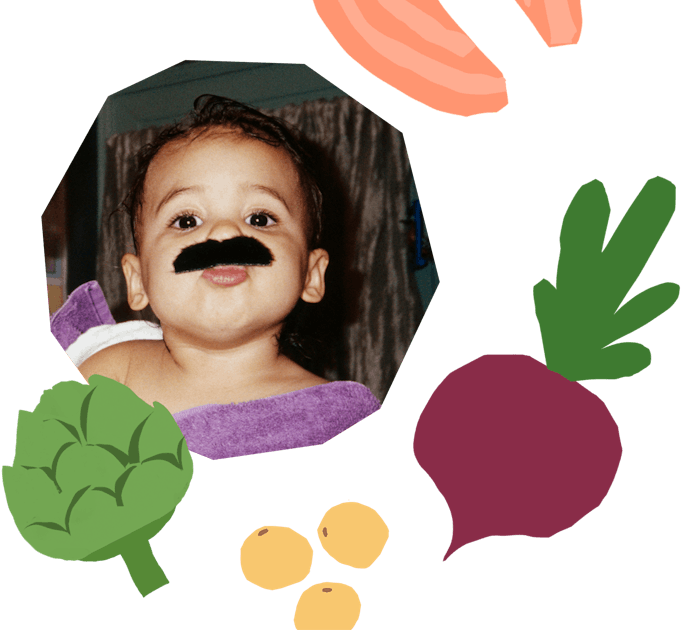
The Program Baby-Led Weaning with Katie Ferraro
A digital course & step-by-step guide for starting solid foods safely with baby-led weaning
 EXPERT-LED, PROVEN APPROACH TO EATING REAL FOOD
EXPERT-LED, PROVEN APPROACH TO EATING REAL FOOD CONCISE VIDEO TRAININGS TO MASTER BABY-LED WEANING
CONCISE VIDEO TRAININGS TO MASTER BABY-LED WEANING 100 FIRST FOODS DAILY MEAL PLAN WITH FOOD PREP VIDEOS
100 FIRST FOODS DAILY MEAL PLAN WITH FOOD PREP VIDEOS
Baby-Led Weaning for Beginners Free Workshop
Is your baby ready to start solid foods, but you’re not sure what to do? Register for this free online video workshop and learn how to give your baby a safe start to solid foods using baby-led weaning. Everyone on this free training receives a copy of Katie’s original 100 FIRST FOODS™ list. You can take this workshop right now, later today when your baby naps, or tomorrow…whatever works for you!
Get baby-led weaning recipes and tips delivered right to your email inbox.